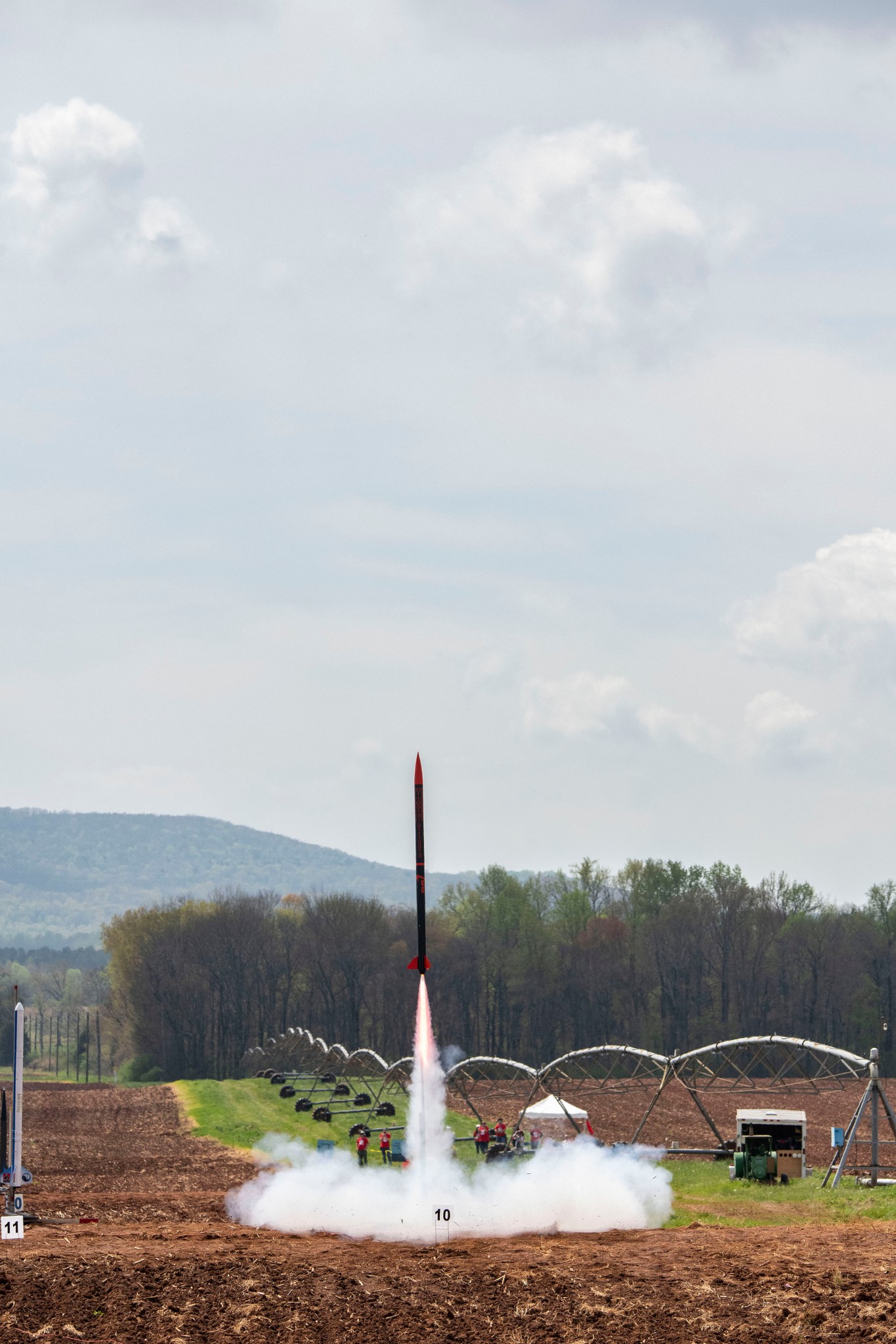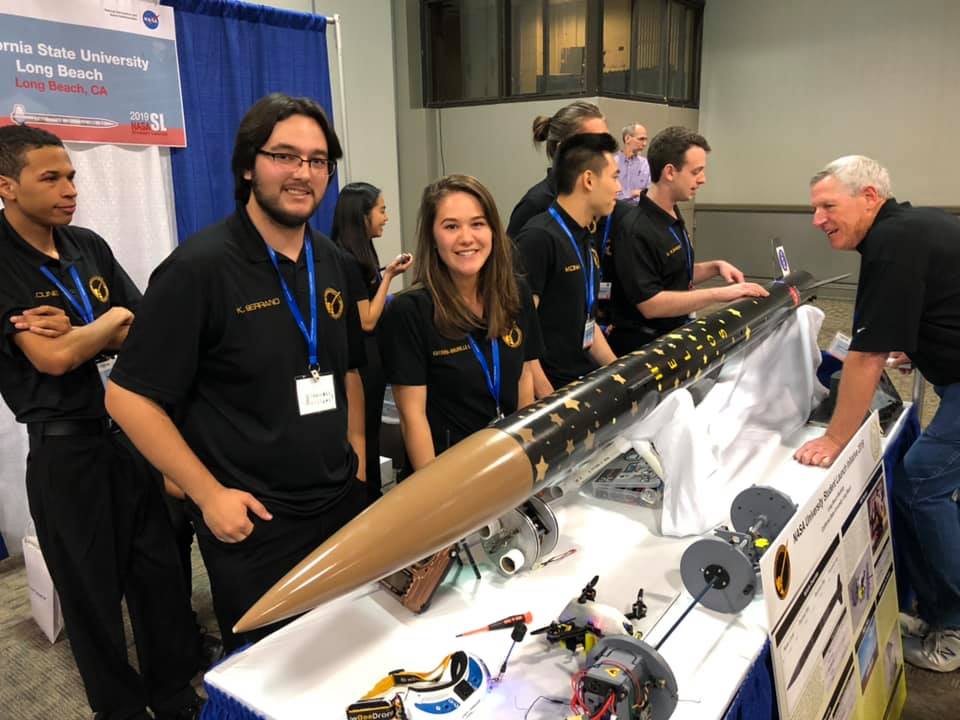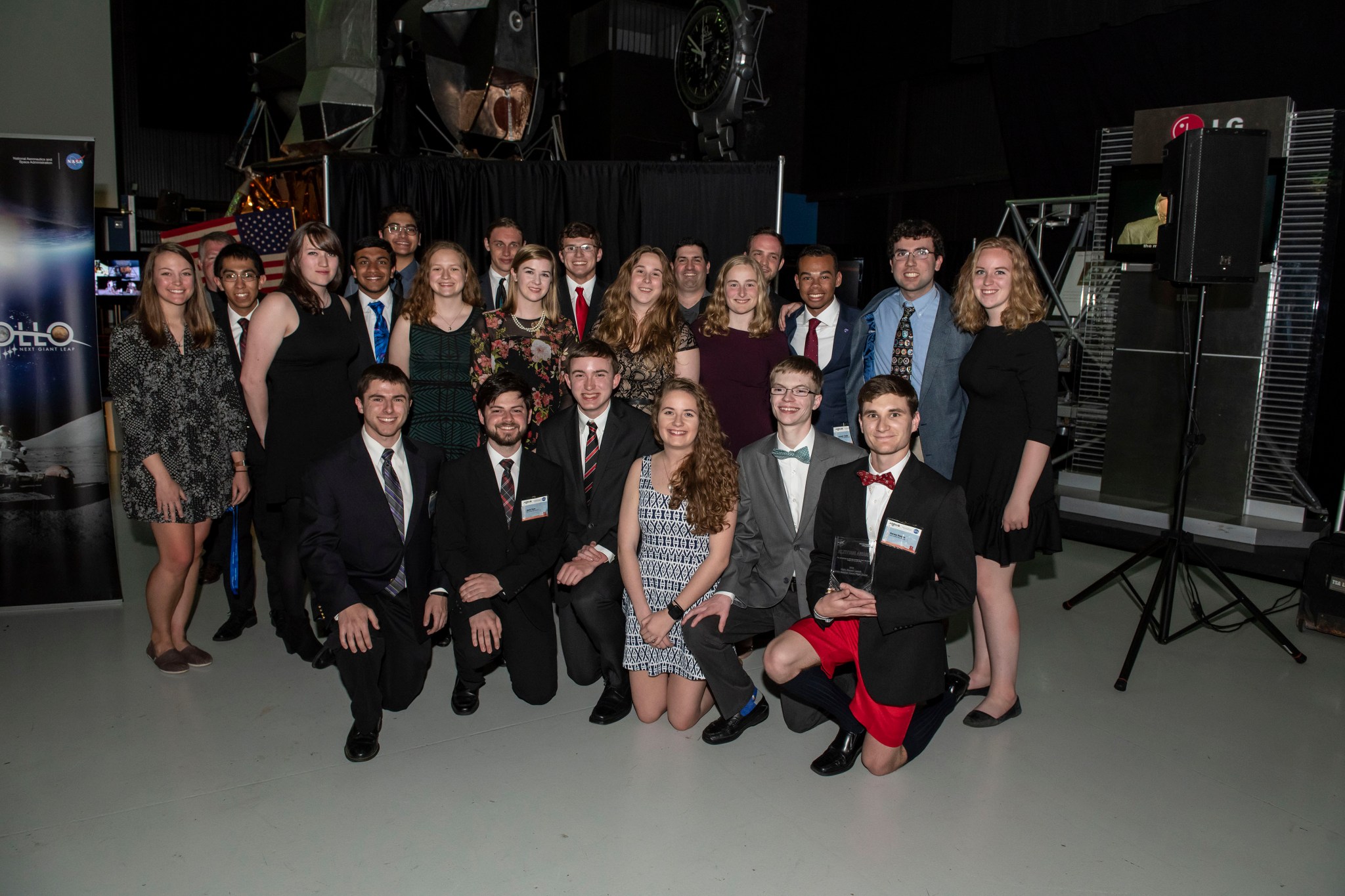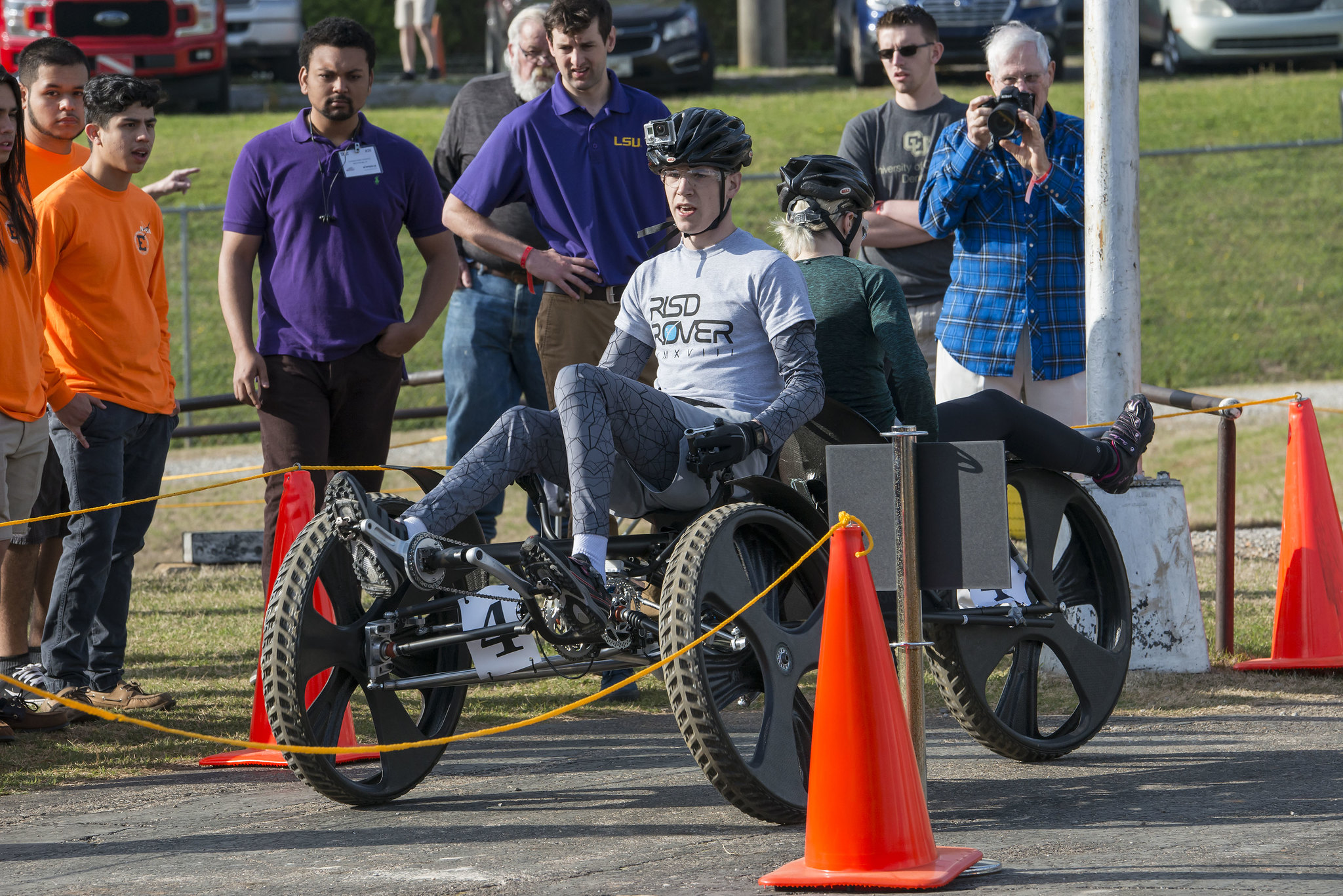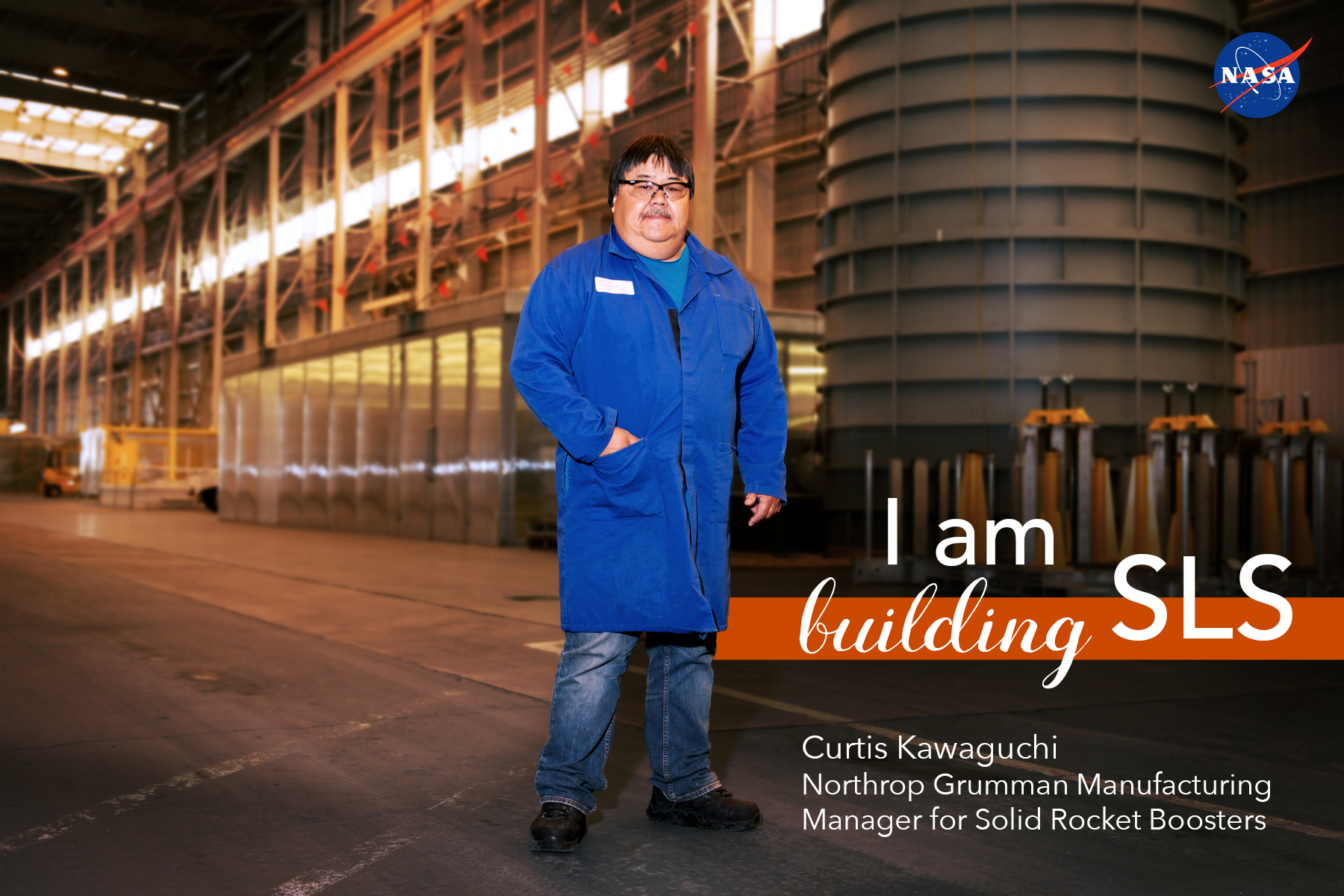In This Week’s Star
- NASA Announces Preliminary Winners of 2019 Student Launch Competition
- NASA Rover Challenge Set for April 12-13 at Space & Rocket Center; Veteran Astronaut Sunita Williams to Participate in Activities
- Final RS-25 Engine Test of 2019 Brings NASA Step Closer to the Moon
- I Am Building SLS: Curtis Kawaguchi
- Head of Swiss Space Office Tours Marshall
- This Week in NASA History: S-IC-T Arrives at Marshall – April 9, 1967
NASA Announces Preliminary Winners of 2019 Student Launch Competition
By Will Bryan
History-making rockets have been developed for nearly six decades at NASA’s Marshall Space Flight Center, and on April 6, 45 student teams from 20 states created their own history at the 2018-2019 Student Launch competition.
Completing its 19th year, Student Launch engages middle school, high school and college teams around the country through a comprehensive program that challenges the students to design, build and test a rocket and payload while meeting multiple documentation and review milestones with NASA rocketry experts. After eight months of designing, building, testing, launching and documenting, the preliminary winners of the annual challenge were announced at an awards ceremony April 6 at the U.S. Space & Rocket Center in Huntsville.
The coveted altitude award — given to the team that came closest to their predicted altitude — was won by North Carolina State University of Raleigh, North Carolina, in the college/university division; and Boy Scout Troop 17 of Charlottesville, Virginia, in the middle/high school division. North Carolina State University missed their target altitude of more than 4,000 feet by just 12 feet. The Boy Scouts missed their predicted altitude of 4,900 by 187 feet. A full list of the preliminary winners can be seen here.
The overall winners of Student Launch will be announced in early May, as the final calculations are still under review for accuracy. This will include the first- through third-place teams, as well as the rookie award winner, with the first-place winner receiving a $5,000 prize from sponsor Northrop Grumman, Corp. and the second-place winner receiving a $2,500 prize from the National Space Club.
About the Competition
Student Launch engages middle school, high school and college teams around the country through an eight-month program that challenges the students to design, build and test a rocket and payload while meeting multiple documentation and review milestones with NASA rocketry experts. The process is designed to resemble the real-world process NASA and industry engineers use when developing new rockets, payloads and hardware.
For the 2018-2019 competition, teams were no longer challenged to reach one mile in altitude. Instead, they had to predict the altitude their rocket would fly to months ahead of the competition launch day. The team in each division that came closest won the altitude award.
The custom-built rockets also carried payloads. College and university teams had to select one of two payload options to develop and fly: a rover that deployed from the rocket after landing, drove 10 feet and collected a soil sample; or a drone that deployed from the rocket, flew and deployed a navigational beacon. Middle school and high school teams could select one of the college division payloads or they could choose to investigate a scientific or engineering question of curiosity to them.
The young rocketeers carry on the legacy, dream and ambition that 50 years ago put the first humans on the Moon during the Apollo program.
For more information about NASA’s Student Launch, visit here.
Archived launch-day footage will be available on NASA’s Student Launch Facebook account.
Bryan, an ASRC Federal/Analytical Services employee, supports the Office of Strategic Analysis & Communications.
NASA Rover Challenge Set for April 12-13 at Space & Rocket Center; Veteran Astronaut Sunita Williams to Participate in Activities
NASA’s Marshall Space Flight Center team members and their families are invited to the U.S. Space & Rocket Center on April 12-13 to cheer on nearly 100 high school and college teams from across the globe in the NASA Human Exploration Rover Challenge.
The 2019 event celebrates both the 50th anniversary of the first Apollo Moon landing and 25 years of friendly competition among high school, college and university students to build and drive innovative, lightweight vehicles inspired by the original lunar rovers.
Participating teams hail from 24 states, the District of Columbia, Puerto Rico and a record number of other countries, including Bangladesh, Bolivia, Brazil, the Dominican Republic, Ethiopia, Egypt, Germany, India, Mexico, Morocco and Peru.
The competition is scheduled to run from 7:30 a.m. to 5 p.m. each day. The event concludes with an awards ceremony April 13 at 5 p.m. at the Huntsville Marriott. The event and awards ceremony also will stream live on the NASA Rover Challenge Facebook page and NASA Rover Twitter.
NASA astronaut Sunita “Suni” Williams will meet with students and take part in the live NASA TV broadcast April 12. A two-time NASA spaceflight veteran, Williams was a flight engineer during International Space Station Expedition 14/15 from December 2006 to June 2007, and again during Expedition 32/33 from July to November 2012. She spent a total of 322 days in space and now ranks sixth on the all-time U.S. endurance list and second all-time for a female astronaut. She is currently training for the first post-certification mission of Boeing’s Starliner spacecraft – the second crewed flight for that vehicle – and her third space station mission.
NASA redesigned the Rover Challenge in 2018 to better reflect modern planetary exploration challenges. New guidelines task students to design human-powered rovers – each powered by two student drivers, one male, one female – through a half-mile course featuring 14 daunting obstacles and five technical tasks, such as collecting samples, taking photos and planting a flag. With just six minutes of “virtual” oxygen per rover, teams must decide which tasks and hurdles to attempt before the clock expires.
Teams in the high school and college categories vie to be among the top three finishers in their divisions, and to win awards from NASA and corporate sponsors, including best vehicle design and best rookie team.
The competition is managed by Marshall’s Office of STEM Engagement and sponsored by NASA’s Human Exploration and Operations Mission Directorate. It is intended to inspire the next generation of STEM explorers skilled in the fields of science, technology, engineering and math.
The event was launched in 1994 as the NASA Great Moonbuggy Race to commemorate the 25th anniversary of the Apollo 11 lunar landing and expanded in 1996 to include high school teams. It evolved again in 2014 into the NASA Human Exploration Rover Challenge. Since its inception, more than 12,000 students have participated. Learn more about the competition and this year’s participating teams here.
Final RS-25 Engine Test of 2019 Brings NASA Step Closer to the Moon
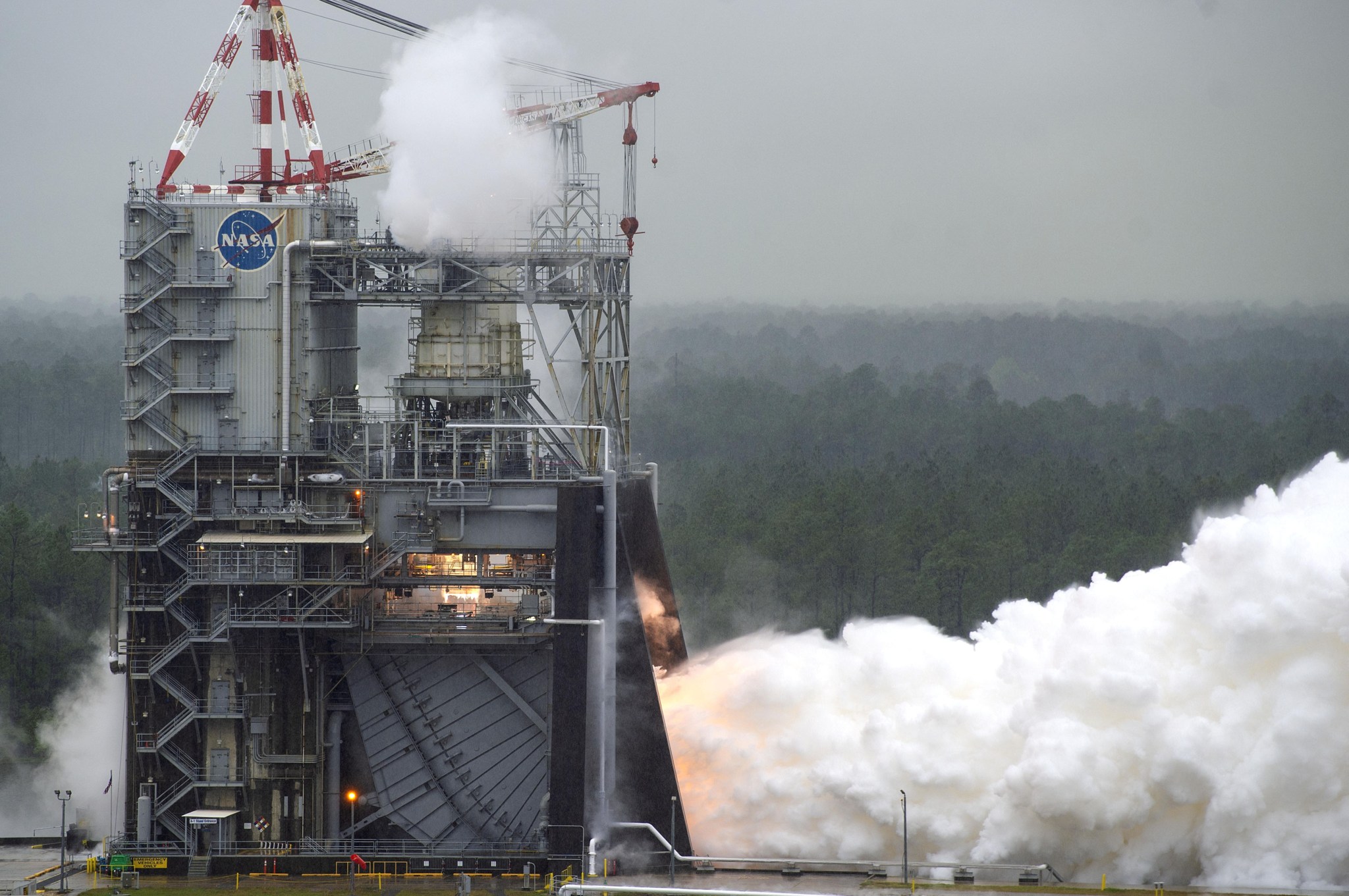
NASA is a step closer to returning astronauts to the Moon in the next five years following a successful engine test at NASA’s Stennis Space Center on April 4. The latest “hot fire” was the culmination of four-plus years of testing for the RS-25 engines that will send the agency’s first four Space Launch System (SLS) rockets into space. When this specific engine fires again, it will help send astronauts aboard NASA’s Orion spacecraft around the Moon for Exploration Mission-2. The most recent test completed the developmental and flightworthy testing for the new controllers as well as the acceptance testing for all 16 former space shuttle main engines that will help launch the four SLS rockets. Additionally, it effectively marked the end of a 51-month test series that demonstrated how RS-25 engines can perform at the higher power level needed to launch the super heavy-lift rocket. NASA has contracted with Aerojet Rocketdyne to build new RS-25 engines for additional SLS missions. Work is already underway at the company’s factory in Canoga Park, California. (NASA/SSC)
I Am Building SLS: Curtis Kawaguchi
I’m proud to be part of building NASA’s new rocket, the Space Launch System, that will return astronauts to the Moon. As a manager at Northrop Grumman’s facility in Promontory, Utah, I oversee the operations for the casting and assembly of the boosters for SLS that will provide more than 75% of total thrust at liftoff, sending NASA’s Orion spacecraft to space.
I supervise about 22 production operators here at Promontory, helping to organize each day’s schedule — and looking ahead to the next day’s to see what needs to be done before casting operations begin. There are many moving parts for casting the booster motor segments. Our work begins in the casting pits, where an empty case is broken over horizontally and vertically and a core is inserted. Then, the rocket motors are filled with propellant. A typical cast takes longer than 24 hours.
During casting, one of the areas I focus on is SLS boosters’ igniters and separation motors. The separation motors are small — about 24 inches — and they fire to separate the boosters from the rocket’s core stage. The motor segments provide the majority of thrust at liftoff. The ignitors and the main motor work in tandem. When the ignitors light, solid fuel begins to burn, helping the rocket to rise from the pad.
There are many things about my job that are amazing. What we do here is something nobody else does — and it’s really cool that we’re developing new rockets for the future. The boosters for SLS are the largest, most powerful solid propellant boosters ever built for flight. At launch, both boosters generate a total of 7.2 million pounds of thrust — more thrust than 14 four-engine jumbo commercial airlines.
Earlier this year, my team completed the manufacture and checkout of 10 motor segments that will power the boosters for the first SLS flight. They will be shipped to NASA’s Kennedy Space Center where they’ll be stacked to form the final boosters for launch. Once fully assembled at Kennedy, each booster will be taller than the Statue of Liberty, or about 17 stories tall, and will bear the entire weight of the rocket on the launchpad before sending SLS and Orion to space.
The people are the best part about this job. I’ve worked with a lot of really good people over the years. With all the time we spend together, working toward NASA’s next deep space rocket, we are like family.
Growing up and living in Utah, I’ve always enjoyed exploring far-flung corners of the world. Whether it’s California’s Redwood National Park or the stunning canyons of southern Utah, the natural beauty and solitude of the great outdoors are the places I’m drawn to most.
Space is the ultimate frontier. I’ve been fortunate to see several space shuttle launches, including three for work and another as a Launch Honoree, but the first SLS launch will be something else entirely. It will launch a whole new era of lunar exploration and help us learn what we need to send astronauts safely to Mars.
Head of Swiss Space Office Tours Marshall
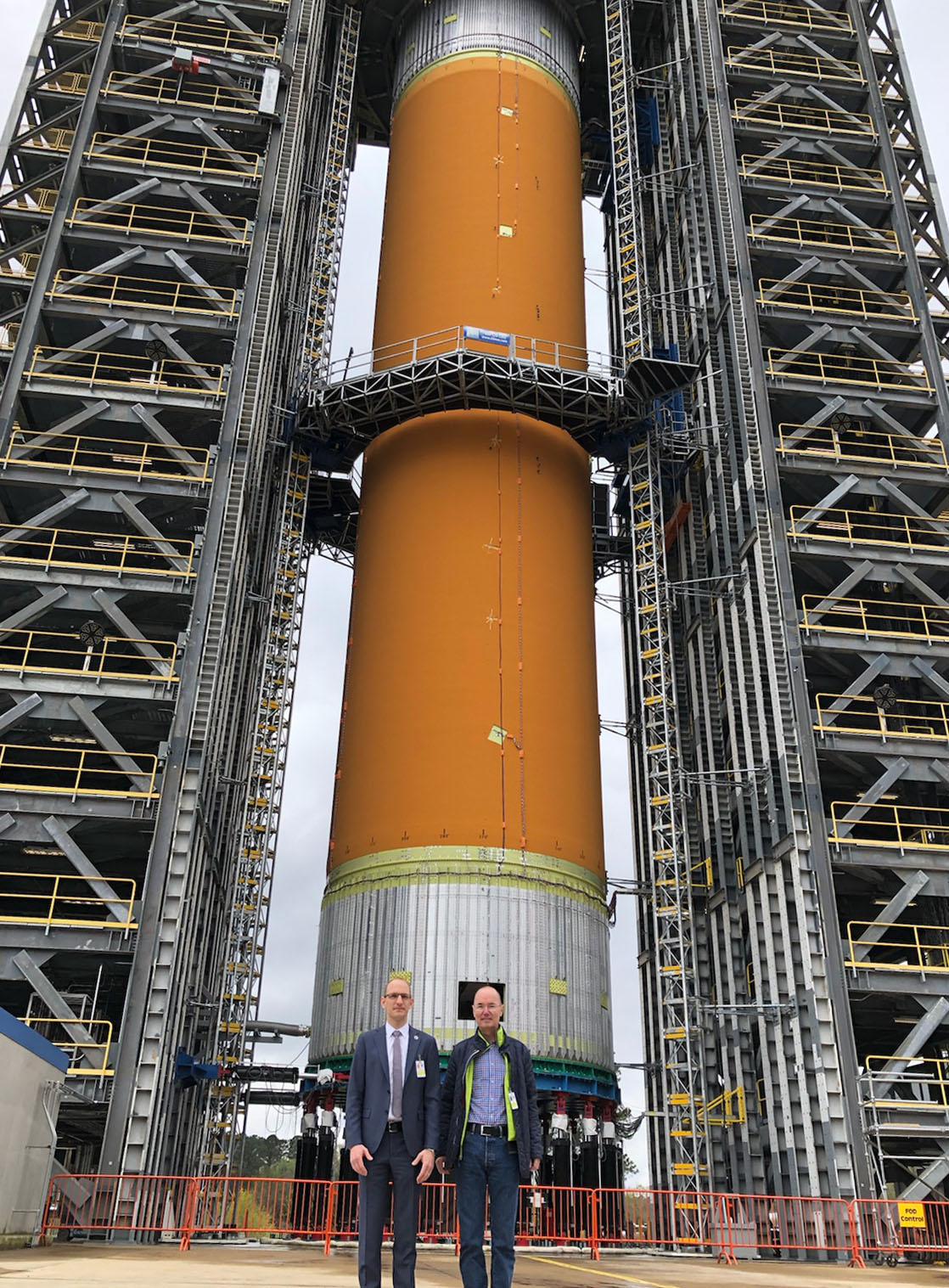
Dr. Renato Krpoun, left, head of the Swiss Space Office at the State Secretariat for Education Research and Innovation of the Swiss Confederation, and Urs Frei, deputy head of the Swiss Space Office, visit NASA’s Marshall Space Flight Center on April 5. Krpoun spoke at the National Space Club breakfast, and with Frei, toured the liquid hydrogen tank stand in Marshall’s west test stand area. The Swiss Space Office is responsible for the preparation and implementation of space policy in Switzerland. Krpoun is the head of the Swiss delegation to the European Space Agency and responsible for the interministerial coordination for space activities in Switzerland. (NASA)
This Week in NASA History: S-IC-T Arrives at Marshall – April 9, 1967
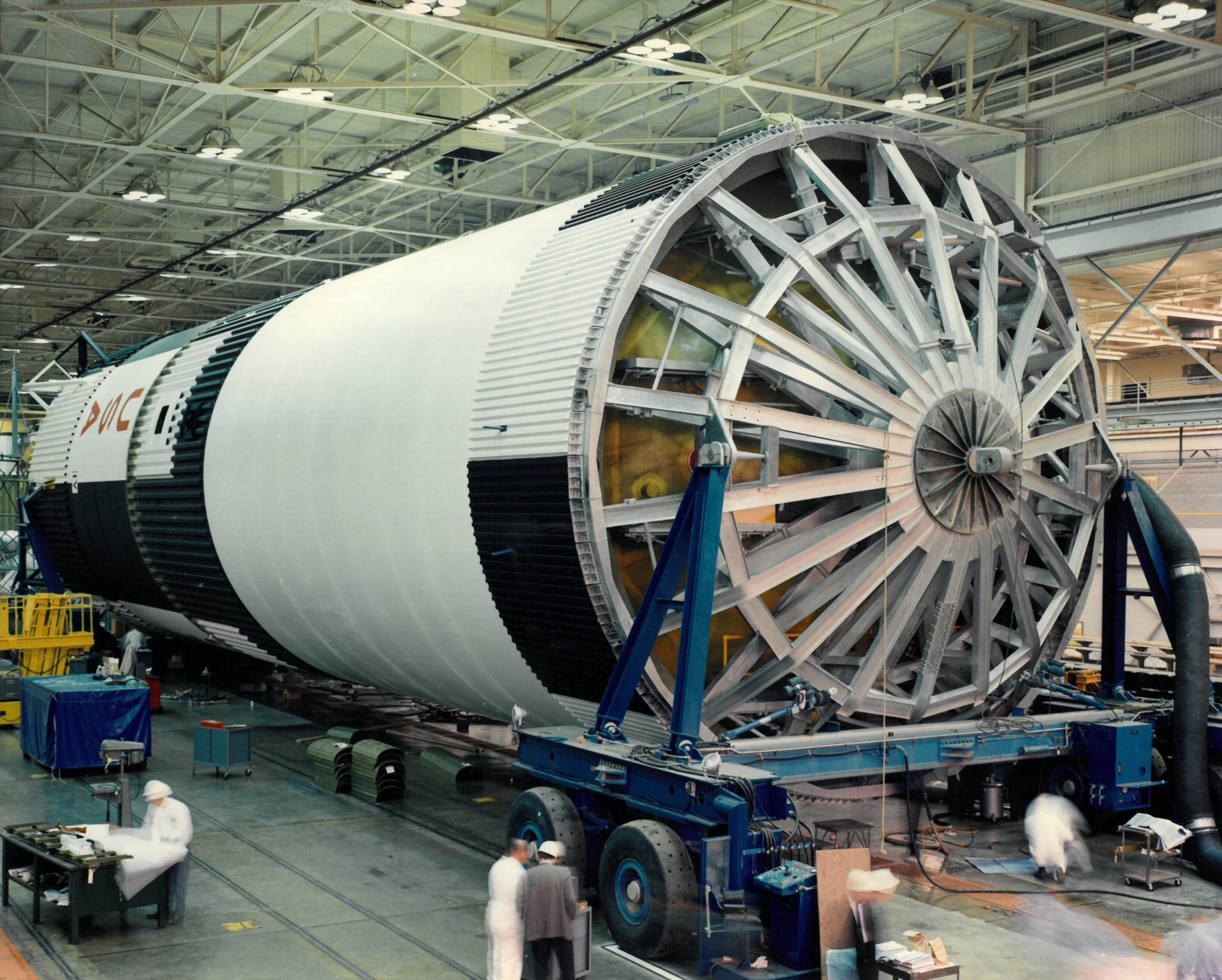
This week in 1967, the S-IC-T arrived at NASA’s Marshall Space Flight Center. The S-IC, or first, stage test article was stored in the Materials and Engineering Lab to await use in research and development testing. When completely assembled, the Saturn V S-IC stage was 138 feet tall, 33 feet in diameter and capable of delivering 7.5 million pounds of thrust from its five engines. Here, the forward end of the S-IC-T is seen on a transporter in Building 4705 at Marshall. The Saturn V rocket was designed at Marshall. Now through December 2022, NASA will mark the 50th anniversary of the Apollo Program that landed a dozen astronauts on the Moon between July 1969 and December 1972, and the first U.S. crewed mission – Apollo 8 – that circumnavigated the Moon in December 1968. The NASA History Program is responsible for generating, disseminating and preserving NASA’s remarkable history and providing a comprehensive understanding of the institutional, cultural, social, political, economic, technological and scientific aspects of NASA’s activities in aeronautics and space. For more pictures like this one and to connect to NASA’s history, visit the Marshall History Program’s webpage. (NASA)


























